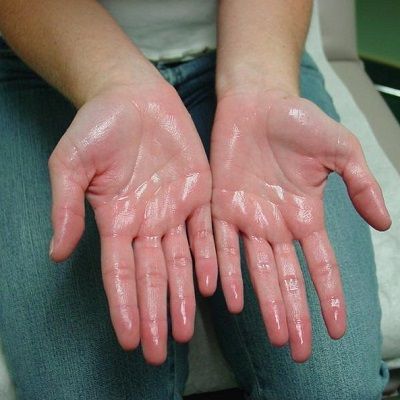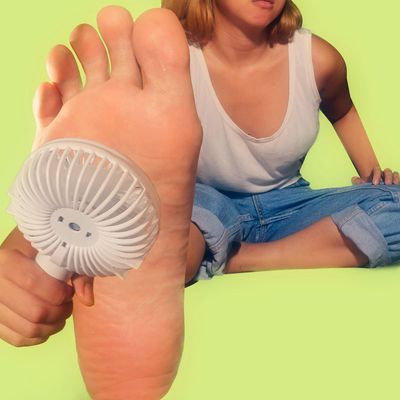Top Dermatology Treatments for Hyperhydrosis of Hands and Feet: What You Need to Know
Top Dermatology Treatments for Hyperhydrosis of Hands and Feet: What You Need to Know
Blog Article
Introducing the Complexities of Excessive Sweating: A Comprehensive Overview to Diagnosis and Administration
Too much sweating, clinically referred to as hyperhidrosis, is a problem that influences a significant variety of individuals and can have a profound impact on their lifestyle. While sweating is a natural bodily feature, its overactivity in hyperhidrosis offers a special set of difficulties that frequently exceed simple pain. Understanding the underlying reasons, acknowledging the signs, and browsing the analysis procedure for hyperhidrosis can be intricate jobs. In this extensive guide, we will explore the complexities of hyperhidrosis, from its medical diagnosis to the variety of treatment options offered, shedding light on efficient management techniques for those coming to grips with this problem.

Understanding Hyperhidrosis Causes
Hyperhidrosis creates can be attributed to various variables such as genes, hormonal inequalities, and particular clinical problems. Genetics play a significant duty in key focal hyperhidrosis, where people acquire the problem from their family participants. By recognizing the details factors adding to extreme sweating, medical care carriers can tailor therapy plans to address the underlying reason, supplying relief and boosting the quality of life for individuals impacted by hyperhidrosis.
Acknowledging Hyperhidrosis Effects
:max_bytes(150000):strip_icc()/sweaty-palms-palmar-hyperhidrosis-4691320-10512b2d428846059753b76df6dc74c2.png)
Moreover, hyperhidrosis signs might materialize in psychological and social distress, as people might feel humiliated or nervous concerning their sweating, bring about evasion of social scenarios (Sweaty hands treatment). In addition, duplicated episodes of too much sweating can cause skin maceration, fungal infections, and a general decrease in self-esteem
Diagnostic Refine for Hyperhidrosis
Initiating the diagnostic procedure for excessive sweating includes extensive assessment of the person's clinical background and checkup. Making inquiries about the onset, duration, and sets off of sweating episodes is critical to set apart in between primary focal hyperhidrosis and secondary generalized hyperhidrosis. Medical history needs to likewise include inquiries regarding medicines, medical conditions, and family members background of hyperhidrosis.
During the physical evaluation, specific attention is paid to the areas influenced by sweating. The doctor might examine the extent of sweating, check for signs of underlying conditions, and examine the impact of sweating on the individual's lifestyle. In addition, specific tests like the gravimetric examination, starch-iodine examination, or skin conductance measurements might be carried out to evaluate the amount of sweat created.
In addition, in cases where additional hyperhidrosis is thought, added examinations such as blood examinations, urine examinations, and imaging research studies may be suggested to determine the underlying reason for extreme sweating. The diagnostic procedure aims to properly establish the type and reason for hyperhidrosis to direct suitable management approaches.
Therapy Alternatives for Hyperhidrosis
When attending to excessive sweating, various therapy choices are offered to reduce signs and symptoms and enhance the person's quality of life. The therapy strategy for hyperhidrosis depends on the intensity of signs and the individual's response to preliminary therapies.
Topical therapies, such as aluminum-based antiperspirants, are frequently recommended as the first line of defense for taking care of moderate situations of hyperhidrosis. These items work by plugging the sweat air ducts, thus reducing the amount of sweat that gets to the skin's surface area. For individuals with more serious signs, oral medications like anticholinergics might be suggested to help lower sweating. However, these drugs can have How to stop sweaty hands negative effects and are not suitable for everybody.

Effective Management Methods
To efficiently manage hyperhidrosis, a detailed and customized treatment plan tailored to the client's particular demands and response to previous therapies is essential. This strategy may integrate a combination of therapeutic strategies, consisting of lifestyle adjustments, topical treatments, dental medications, botulinum toxin injections, iontophoresis, and in severe instances, medical treatments like sweat gland removal or sympathectomy. Way of living modifications such as using moisture-wicking clothes, using antiperspirants, and practicing stress-reducing techniques can match clinical interventions. Topical antiperspirants containing light weight aluminum chloride are frequently the first-line therapy, with stronger formulas available for resistant instances. Oral medications like anticholinergics may be suggested for generalized hyperhidrosis. Botulinum toxin injections are efficient for focal hyperhidrosis, providing short-lived relief by obstructing the launch of acetylcholine. Iontophoresis, involving making use of a low electrical present to decrease sweat gland task, can be beneficial for both palmoplantar and axillary hyperhidrosis. Surgical options are usually booked for extreme, refractory cases and need careful factor to consider of advantages and dangers. A multidisciplinary technique entailing dermatologists, health care physicians, and, if essential, doctors, can maximize the monitoring of hyperhidrosis.
Verdict
In conclusion, hyperhidrosis is a condition characterized by excessive sweating, which can considerably affect an individual's high quality of life. With appropriate medical diagnosis and administration methods, individuals enduring from hyperhidrosis can locate alleviation and boost their total health.
Excessive sweating, clinically recognized as hyperhidrosis, is a condition that influences a considerable number of people and can have a profound impact on their high quality of life. By identifying the particular factors adding to too much sweating, health care suppliers can customize therapy plans to address the underlying cause, providing relief and boosting the top quality of life for individuals impacted by hyperhidrosis.
Hyperhidrosis, defined by extreme sweating past what is required for controling body temperature level, can significantly affect a person's quality of life. Making inquiries regarding the onset, duration, and activates of sweating episodes is essential to set apart between key focal hyperhidrosis and secondary generalised hyperhidrosis. Treatment for hyperhydrosis of hands and feet.In conclusion, hyperhidrosis is a condition identified by extreme sweating, which can considerably affect an individual's quality of life
Report this page